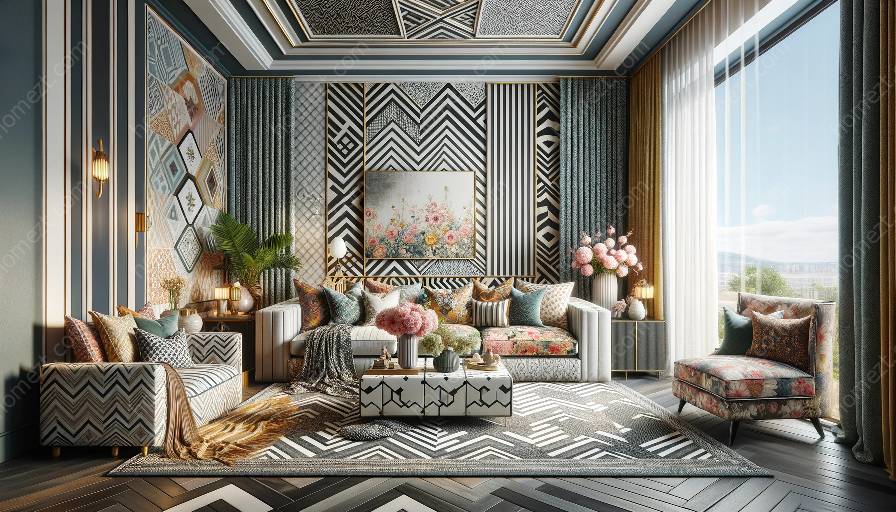Pattern mixing is a creative and exciting way to add visual interest and personality to your home decor. By combining various patterns and textiles, you can create a unique and stylish look that reflects your individual style. Whether you're a beginner or a seasoned decorator, mastering the art of pattern mixing can elevate your interior decor to the next level.
The Basics of Pattern Mixing
Pattern mixing involves combining different patterns, such as stripes, florals, geometric designs, and textures, to create visual harmony. Understanding the basics of pattern mixing is essential to achieve a balanced and cohesive look in your home.
1. Start with a Neutral Base
When experimenting with pattern mixing, it's helpful to begin with a neutral base, such as a solid-colored sofa or walls. This provides a clean canvas for your patterns to shine without overwhelming the space.
2. Scale and Proportion
Consider the scale and proportion of the patterns you're using. Mixing various sizes of patterns, from large-scale to small-scale, creates visual interest and prevents the space from feeling too busy.
3. Color Coordination
Coordinate the colors within your patterns to ensure they complement each other. Pull out a dominant color from one pattern and use it as a unifying element throughout the room.
Tips for Successful Pattern Mixing
Although pattern mixing can seem daunting, it's a fun and rewarding process that allows you to express your creativity. Here are some tips to help you master the art of pattern mixing in decorating:
- Layer Patterns: Experiment with layering different patterns on furniture, pillows, curtains, and rugs to create depth and dimension in your space.
- Mix Textures: Incorporate various textures, such as knits, linens, and velvet, to add tactile interest and balance to the overall look.
- Use a Focal Point: Choose one standout pattern as the focal point of your room and complement it with more subtle, coordinating patterns.
- Embrace Contrast: Pair bold, graphic patterns with softer, more delicate ones to create a dynamic and visually engaging space.
Pattern Mixing in Different Rooms
Pattern mixing can be applied to various rooms in your home, from the living room to the bedroom and beyond. Each room offers unique opportunities to experiment with different patterns and textiles to achieve a cohesive and inviting atmosphere.
Living Room
In the living room, consider mixing patterns on throw pillows, accent chairs, and area rugs to infuse the space with personality and charm. A combination of floral, striped, and geometric patterns can add vibrancy and warmth to the room.
Bedroom
For the bedroom, experiment with mixing patterned bedding, curtains, and wallpaper to create a cozy and inviting retreat. Balance bold patterns with softer, more subdued ones to achieve a tranquil ambiance.
Dining Room
In the dining room, use patterned tablecloths, napkins, and chair cushions to inject lively energy and visual intrigue into your dining space. Consider mixing different patterns to create a welcoming and spirited atmosphere for entertaining.
Pattern Inspiration
Seeking inspiration for pattern mixing can come from a variety of sources, including nature, art, and global cultures. Draw inspiration from vibrant textiles, traditional motifs, and eclectic designs to infuse your space with character and originality.
Conclusion
Mastering the art of pattern mixing in decorating and interior decor opens up endless possibilities for creating a home that reflects your unique style and personality. With the right approach and thoughtful curation, pattern mixing can transform your space into a visually captivating and inviting environment.






































